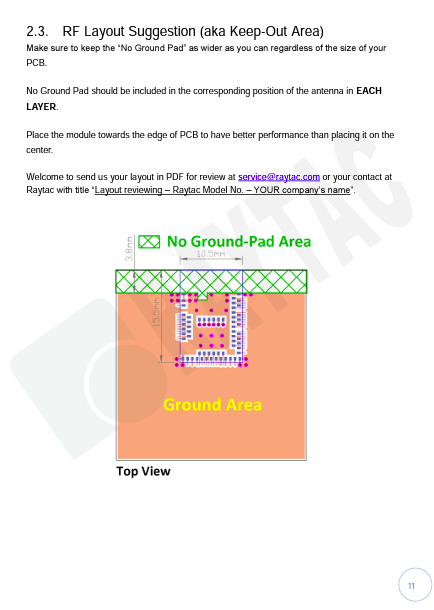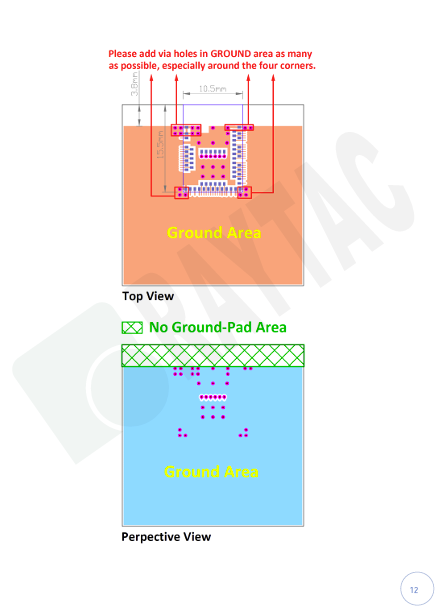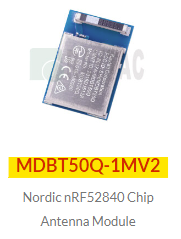Keep Out Area
The "keep out area" in a module, particularly when it comes to electronics and antennas, serves several critical purposes:
- Electromagnetic Isolation: One of the primary functions of the keep out area is to maintain electromagnetic isolation. It ensures that other components, conductive traces, or structures are not placed too close to the antenna. This is vital to prevent interference and maintain the antenna’s radiation pattern and performance.
- Preventing Mutual Interference: Electronic components, especially those generating electromagnetic radiation, can interfere with the antenna’s operation if placed too closely. The keep out area enforces a minimum distance to prevent such interference and maintain the antenna’s signal quality.
- Optimizing Radiation pattern: Antennas have specific radiation patterns that dictate how they transmit and received signals. The keep out area helps ensure that the antenna’s radiation pattern remains unobstructed. Placing components within this area can alter the pattern and reduce antenna efficiency.
- Safety and Compliance: Compliance with safety and regulatory standards is crucial in electronic devices. The keep out area may be mandated by these standards to minimize the risk of electromagnetic exposure for users and to ensure the device operates within allowable limits.
- Thermal Considerations: Some components generate heat during operation. The keep out area can also account for thermal considerations, ensuring that heat-producing components do not adversely affect the antenna's performance due to temperature-induced changes in materials or interference.
- Mechanical Clearance: Besides electromagnetic concerns, the keep out area can also provide mechanical clearance, ensuring that the antenna is not physically obstructed by other components or structures.
In summary, the keep out area in a module is a critical design aspect that aims to maintain the integrity, performance, and safety of the antenna system within an electronic device by managing electromagnetic, thermal, mechanical, and regulatory considerations.
Use following module as our example, you are recommend referring to our specification link on page 12-13 for RF layout suggestions (Keep out area.)
MDBT50Q-1MV2 (<-Click me for Product details)
Specification:
[nRF52840] MDBT50Q-1MV2 & MDBT50Q-P1MV2 Spec (Ver.L) (<-Click me for Specification details)
Design Guide includes:
MDBT50Q & MDBT50Q-P & MDBT50Q-U Footprint_Design Guide (230606) (<-Click me and find the corresponding doc name for download.)
- Footprint (compatible for Protel, Eagle, Altium Design)
- 2D/3D drawing
- Reflow/Solder Profile
- Spec for external 32.768KHz



Instruction to find out selected module’s specific/design guide etc:
Following below steps after link to Raytac Corporation official webpage, click on yellow highlighted texts to find and download selected module’s specific/design guide etc … accordingly.
1. Raytac Corporation official website

2.

3.

Edited by Sales Manager: Ms. Mandy Chao
Raytac Corporation 勁達國際電子有限公司
A BT5.2 & BT5.1 & BT5 module maker based on Nordic nRF53 & nRF52 solution
(nRF5340 & nRF52840 & nRF52833 & nRF52832 & nRF52820 & nRF52811 & nRF52810 & nRF52805)
http://www.raytac.com email: service@raytac.com Tel: +886.2.3234.0208

No comments:
Post a Comment